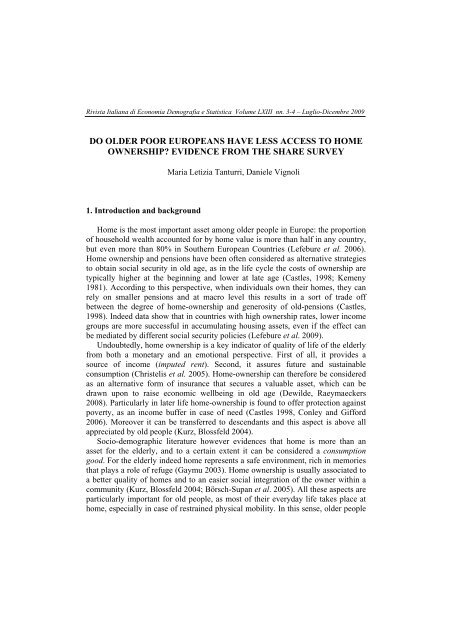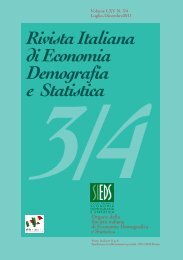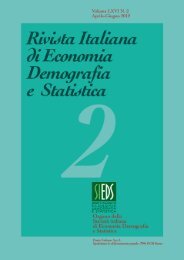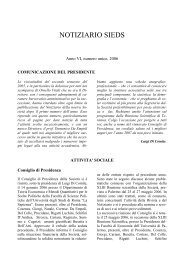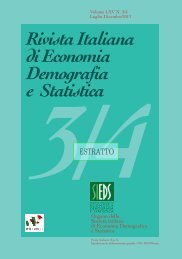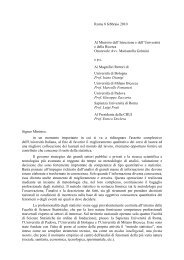rivista italiana di economia demografia e statistica - Sieds
rivista italiana di economia demografia e statistica - Sieds
rivista italiana di economia demografia e statistica - Sieds
You also want an ePaper? Increase the reach of your titles
YUMPU automatically turns print PDFs into web optimized ePapers that Google loves.
Rivista Italiana <strong>di</strong> Economia Demografia e Statistica Volume LXIII nn. 3-4 – Luglio-Dicembre 2009<br />
DO OLDER POOR EUROPEANS HAVE LESS ACCESS TO HOME<br />
OWNERSHIP? EVIDENCE FROM THE SHARE SURVEY<br />
Maria Letizia Tanturri, Daniele Vignoli<br />
1. Introduction and background<br />
Home is the most important asset among older people in Europe: the proportion<br />
of household wealth accounted for by home value is more than half in any country,<br />
but even more than 80% in Southern European Countries (Lefebure et al. 2006).<br />
Home ownership and pensions have been often considered as alternative strategies<br />
to obtain social security in old age, as in the life cycle the costs of ownership are<br />
typically higher at the beginning and lower at late age (Castles, 1998; Kemeny<br />
1981). Accor<strong>di</strong>ng to this perspective, when in<strong>di</strong>viduals own their homes, they can<br />
rely on smaller pensions and at macro level this results in a sort of trade off<br />
between the degree of home-ownership and generosity of old-pensions (Castles,<br />
1998). Indeed data show that in countries with high ownership rates, lower income<br />
groups are more successful in accumulating housing assets, even if the effect can<br />
be me<strong>di</strong>ated by <strong>di</strong>fferent social security policies (Lefebure et al. 2009).<br />
Undoubtedly, home ownership is a key in<strong>di</strong>cator of quality of life of the elderly<br />
from both a monetary and an emotional perspective. First of all, it provides a<br />
source of income (imputed rent). Second, it assures future and sustainable<br />
consumption (Christelis et al. 2005). Home-ownership can therefore be considered<br />
as an alternative form of insurance that secures a valuable asset, which can be<br />
drawn upon to raise economic wellbeing in old age (Dewilde, Raeymaeckers<br />
2008). Particularly in later life home-ownership is found to offer protection against<br />
poverty, as an income buffer in case of need (Castles 1998, Conley and Gifford<br />
2006). Moreover it can be transferred to descendants and this aspect is above all<br />
appreciated by old people (Kurz, Blossfeld 2004).<br />
Socio-demographic literature however evidences that home is more than an<br />
asset for the elderly, and to a certain extent it can be considered a consumption<br />
good. For the elderly indeed home represents a safe environment, rich in memories<br />
that plays a role of refuge (Gaymu 2003). Home ownership is usually associated to<br />
a better quality of homes and to an easier social integration of the owner within a<br />
community (Kurz, Blossfeld 2004; Börsch-Supan et al. 2005). All these aspects are<br />
particularly important for old people, as most of their everyday life takes place at<br />
home, especially in case of restrained physical mobility. In this sense, older people


